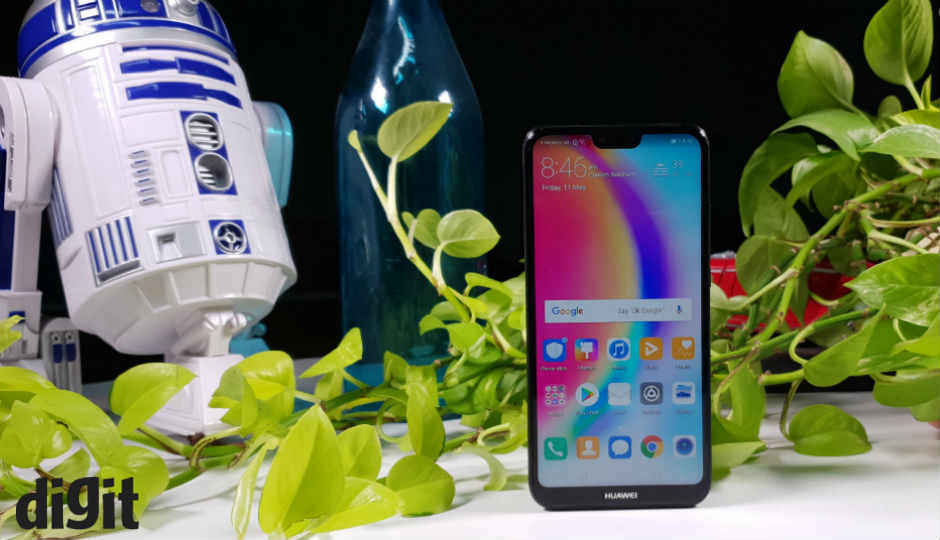Huawei P20 Lite 64GB Review
 19999/- Buy Now
19999/- Buy Now
Huawei P20 Lite 64GB Price in India
Huawei P20 Lite 64GB Rating 69100100
Our Verdict
The Huawei P20 Lite is a sign of good things to come from Huawei. The company ignored the Indian market for the past few years, but returned with a bang with its two camera-centric offerings. It’s a phone meant for taking good photos, but when it comes to performance, it lags behind almost everyone in the mid-range segment.
PROS
- Bright Display
- Well-tuned camera
CONS
- Aged hardware
- Poor battery
Huawei P20 Lite 64GB: Detailed Review
Huawei made a comeback last month to the Indian smartphone market with the flagship Huawei P20 Pro with three cameras at the back, and the toned-down, but similar-looking P20 Lite. While the P20 Pro set a benchmark for the smartphone camera, the Huawei P20 Lite doesn’t have an USP like that. Heck, it doesn’t even have the Leica branding at the back. What it does have is the notch cutout from part of the display and a dual camera setup at the back. It’s no doubt the P20 Pro is the flagship here, but can the P20 Lite set a precedent in the mid-range market similarly? We find out.
Design
Rarely do mid-range phones try to look good without compromising on the feature set. The Huawei P20 Lite is not an original design by any means, but it does look elegant for the price it is offered. Hold the phone and you’ll know where the inspiration came from. The P20 Lite rocks a display notch and is not the first Android device to do so. Now, a lot of controversy has happened over the notch, but truth be told, the notch serves a purpose. The demand for full-screen phones are at an all time high and the notch allows phone makers to utilise more free space on the body for the screen, than ever before. The iPhone X of course has more use for the notch. It needs the TruDepth camera to be centrally positioned to facilitate Face ID, but the Huawei P20 Lite has no such sensors housed in the notch. Instead, the notch houses the front camera, the ambient sensor and the microphone. The notch is also much smaller than the iPhone X. Amidst phones with univisium display with the more common taller form factor, the P20 Lite is easily distinguishable thanks to the notch and its compact size. But with more ‘notched’ phones incoming this year, that advantage may soon be gone.
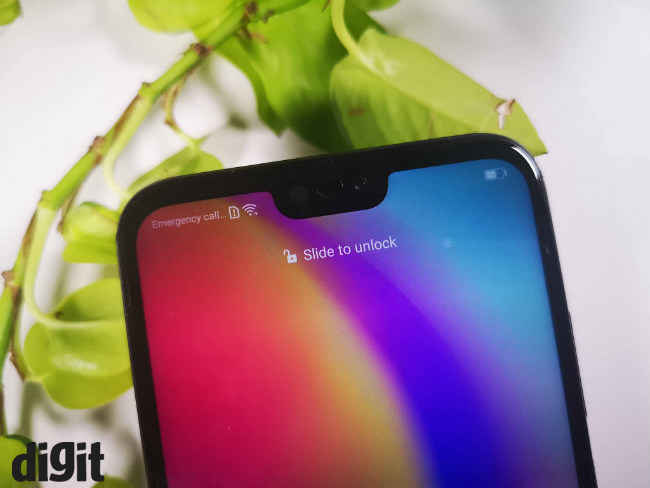
Now, the purpose of the notch is to utilise the free space on the top and the bottom of the body. But while the Huawei P20 Lite shave off inches from the top, the bottom chin has a lot of free space where the Huawei moniker is placed. It sort of defeats the purpose of the notch and one could question Huawei’s design choice for simply following a trend more than anything else.
The notch, however, isn’t omnipresent. Huawei gives an option to hide it by simulating a black patch over it. The area still houses the notification badges and the network icons, but the content doesn’t take up the extra space. Note that by ‘removing’ the notch, you will be giving up roughly 0.2-inches of screen real estate.
But enough about the notch. Turn the phone around and you will be greeted by a vertically aligned dual camera setup placed raised above the glass body. Huawei’s colour choices are interesting. The phone is available in a deep midnight black which we received for the review. It’s akin to the iPhone 7’s Piano Black variant but with a slightly glossy glass body. There’s also a blue and pink colour variant along with a new twilight variant that can change colours based on the angle you’re looking at. Unfortunately, the twilight variant is not available in India. Hopefully, Huawei will introduce it soon.
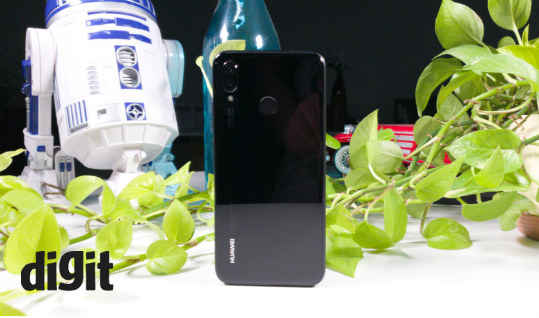
As mentioned above, the phone does have a glass body, which requires it to be handled very carefully. Once again, the design choice of putting a glass back is somewhat pointless. Apart from better aesthetics, glass back is used to facilitate wireless charging. The P20 Lite has no such provision. As a result, it comes off being intentionally brittle. One drop might shatter the back and take away all the beauty the phone boasts of. The frame, however is made of solid aluminium. It’s polished to give a smooth finish that adds to the elegance. The phone uses a USB-Type C port to charge which is placed at the bottom, flanked by the 3.5mm headphone jack and the external speakers on either side. The more expensive P20 Pro houses an infrared sensor as well, but that’s missing on this one.
All said and done, the P20 Lite is one of the most compact full-screen phones out there right now. It fits a 5.84-inch display in a 5.85-inch body which makes it score high on ergonomics. It feels nice to hold and the finger can reach the other end of the display quite easily. There’s nothing to complain about Honor’s craftsmanship save for the reasons behind certain choice of materials.
Display
The panel on the Huawei P20 Lite is one of the brightest we have seen at the sub-20k price range. It’s an IPS LCD panel of full HD+ resolution and stretches to 5.84-inches diagonally. The colours are also quite vibrant and at medium brightness, it tends to pop out when indoors. Outside under the sun though, the colours seem a little faded, but thanks to the higher max brightness, texts are legible enough.
Huawei does offer a lot of options to tweak the display though. You can cycle between a cooler and warmer colour temperature, but you’re better off sticking to the default option. There’s a blue-light filter, which has become more or less standard across smartphone. What’s interesting is that you can switch between 720p and 1080p resolution. Dialling down the resolution helps save battery. There are also options to tweak the text size and font as well as the above-mentioned option of hiding the notch. However, even after hiding the notch, you can still make out its presence as the panel is LCD which cannot selectively turn off pixels to achieve full black.
Furthermore, not all apps support the notch currently. While common apps like Facebook, YouTube and WhatsApp supports it, games like PubG and Asphalt haven’t been optimised for the cutout in the middle.
Videos and photos on the display are rich and well-detailed. The sharpness is also commendable. The colour temperature by default is a little on the cooler side, but that doesn’t come in the way of enjoying content on the screen.
Performance
Now, the P20 Lite may score high on aesthetics and imaging prowess, but Huawei has held back in upgrading the performance. The P20 Lite is powered by the same HiSilicon Kirin 659 chipset that powered all of Honor’s mid-range devices last year, including the Honor 9i, the Honor 7X and more recently, the Honor 9 Lite. That is coupled with 4GB of RAM and 64GB of storage. The Kirin 659 was a challenger to the Snapdragon 625 last year, and for the most part, it did give a good competition to one of Qualcomm’s most popular chipsets. However, with current mid-range devices being powered by the more powerful Snapdragon 630 and the Snapdragon 636, the Kirin 659-powered Huawei P20 Lite lags far behind.
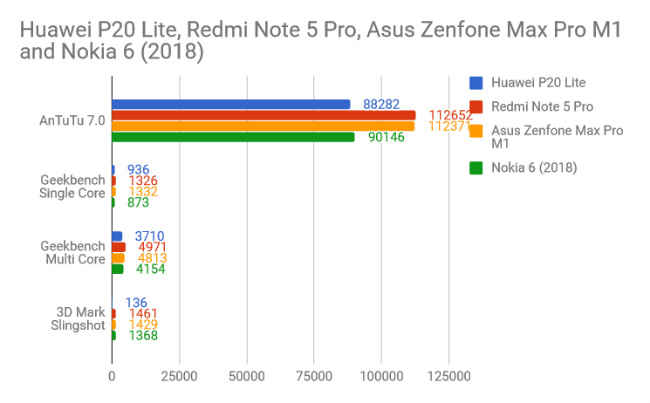
The same is evident in benchmark results. The P20 Lite registers an AnTuTu 7.0 score of 88282 which is way lesser than the Redmi Note 5 Pro's score of 112652. It proves that despite being priced higher, it cannot match up to the performance of more affordable devices. The CPU performance of the phone is also lesser than the current industry average, although the phone can hit a max clock speed of 2.36GHz which is higher than any other mid-range chipsets currently. However, clocking that high a frequency will require a lot of computational load for a long duration. Also, at full power, the CPU will drain the battery a lot faster. It’s not the highest frequency that matters when it comes to mobile chipsets, but how efficiently can the CPU allocate the resources and get the job done without stuttering and stumbling.
Speaking of which, the real-world performance of the phone was more or less satisfactory. The EMUI UI on top of Android 8.0 tends to put a lot of load on the processor which does tend to bog down the phone sometimes. Huawei claims to use machine learning to understand the user’s usage habits and tunes the phone accordingly. Frankly, I didn’t see a difference after a week-long use of the phone. There are occasional lags and stutters in the UI and apps take a wee bit longer to launch. Once running, there was no slowdowns or stutters though. Gaming is also quite satisfactory. PubG mobile runs on medium settings and I didn’t encounter any frame drops while playing.
The EMUI interface is what takes away from the elegance of the phone. It’s a premium phone if you don’t turn on the screen. Once you do, it feels like one of those amateurish interfaces seen in budget Chinese phones. The asymmetrical icons, the choppy animation and a bunch of bloatware apps makes it one of the lesser appealing interfaces on a phone. Having said that, EMUI comes loaded with a lot of personalisation options. The Settings app is a long scroll packed with options ranging from security features and accessibility options. There’s a face unlock option as well which isn’t secure but works when there’s light outside. In fact, the phone was easily unlocked when someone else pointed it to my face. Otherwise, the rear-mounted fingerprint sensor is as fast as it can get.
Camera
While the performance aspect of the P20 Lite is underwhelming, it more than makes up for it in terms of imaging prowess. The P20 Lite may not rock the Leica branding like its more expensive elder sibling, but the dual cameras at the back are one of the most effective we have seen in that price range.
The P20 Lite sports a 16-megapixel sensor with f/2.2 aperture and 1.0um pixel pitch along with a 2-megapixel depth sensor. That’s the usual dual camera setup seen in mid-range phones. But Huawei does some magic behind the scenes that makes the colours come out quite vibrant and more or less accurate. The daytime imagery is more than satisfactory with the right amount of exposure and dynamic contrast. Highlights and shadows are well-balanced and comes close to what the Xiaomi Redmi Note 5 Pro can produce with the rear camera.

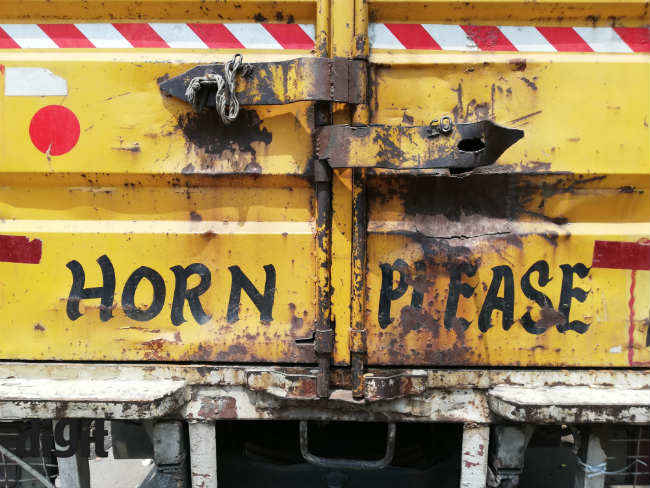
Closeup shots can give good details and sharpness although the algorithm tends to simulate the depth of field which makes the background blur a little inconsistent. The colours are lush and vibrant and nothing to complain about.

Low-light is where it aces, though. The P20 Lite can take good photos even there’s little light. There is some noise, but the details and sharpness are well-preserved. It’s perhaps the most well-tuned camera at the mid-range.
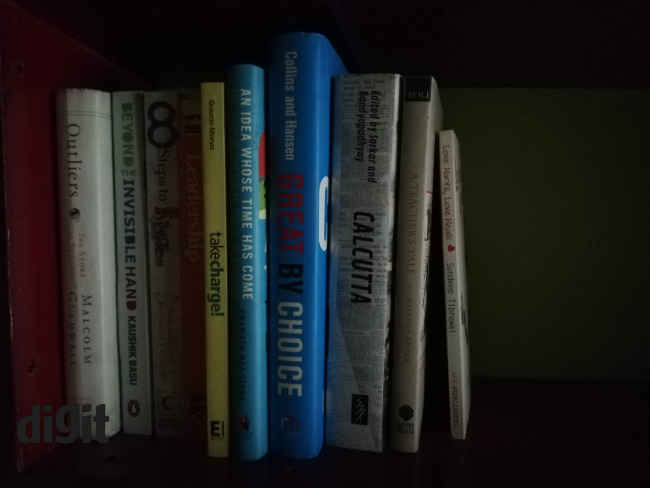
The only place where it falters is in the bokeh mode. The background blur in the P20 Lite isn’t as very consistent although it can produce circular bokeh, which is a mark of a professionally shot photo.
As for selfies, the 16-megapixel shooter is good enough. It has the added beautification modes and software-based bokehs, which tends to make you look quite artificial. It will remove all blemishes and spots and make the skin look softer. It’s up to the user to decide whether to use it. In case you don’t, there’s an option to turn it off.
Battery
The P20 Lite is powered by a 3,000mAh battery that just about does the work. When used lightly, the phone will last over a day, but a little stress can drain the battery by the end of a typical work day. Using the phone over a week, I felt the battery drain is higher when taking photos and browsing the internet. Gaming is more optimised. Playing PubG for an hour drained the battery by around 30 percent, which is more impressive than some flagship-grade phones. Huawei claims to use machine learning to tune the battery to eke out more juice, which seems to be the case considering how certain tasks are less stressful for the battery while some are more. However, we can never know for sure. In the PC Mark 2.0 Battery test, the phone lasted around 6 hours, which is decent enough for its price.
Bottomline
The Huawei P20 Lite is a welcome offering at the sub-20K price point. It’s a tad overpriced, yes, but considering the design chops of the phone and the camera, the price is quite justified. Is it better than the Redmi Note 5 Pro? If you consider the value for money, then no. Otherwise, the camera is at par with Xiaomi’s offering. The P20 Lite feels like the younger sibling to the P20 Pro in every sense. They have similar designs and cameras that are class-leading in their own segment. Save for the battery life and the performance, the Huawei P20 Lite can be hailed as one of the better mid-range phones around.
Buy Now
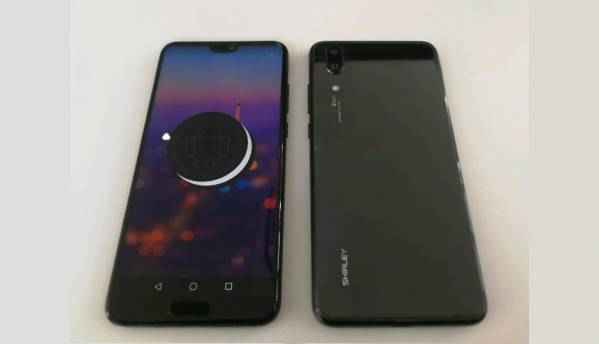 Huawei P20 series smartphones pricing leaks ahead of March 27 launch
Huawei P20 series smartphones pricing leaks ahead of March 27 launchHuawei officially announced that they will unveil their upcoming P20 series of smartphones at an event in Paris on March 27. Ahead of the event, the...
06 - Mar - 2018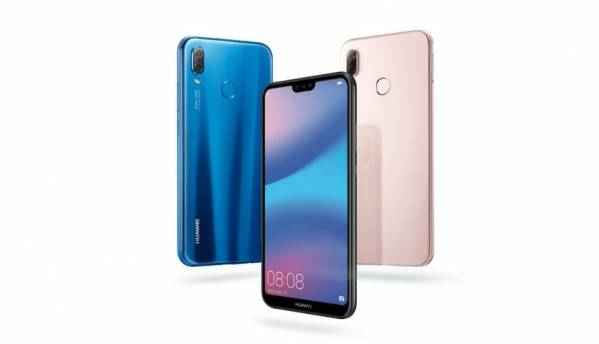 Huawei P20 series smartphones to launch today: How to watch live stream, expected price and specifications
Huawei P20 series smartphones to launch today: How to watch live stream, expected price and specificationsHuawei is all set to unveil its latest P20 series flagship smartphones in an event in Paris today. We are expecting the company to unveil its...
26 - Mar - 2018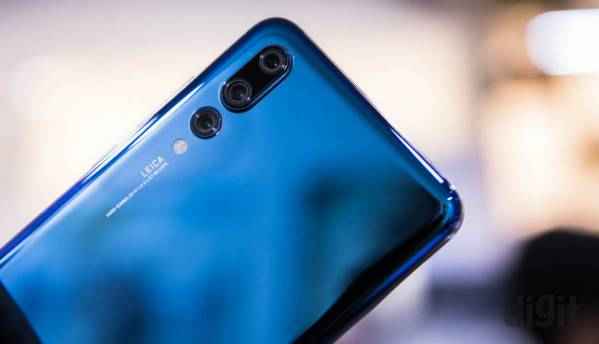 Huawei P20 Pro with triple-cameras, Huawei P20 Lite with dual-rear cameras launched in India
Huawei P20 Pro with triple-cameras, Huawei P20 Lite with dual-rear cameras launched in IndiaHuawei has launched its triple camera smartphone, the Huawei P20 Pro (review) in India, along with the P20 Lite. The P20 Pro is the company’s...
24 - Apr - 2018

Huawei made a comeback last month to the Indian smartphone market with the flagship Huawei P20 Pro with three cameras at the back, and the toned-down, but similar-looking P20 Lite. While the P20 Pro s...
---------------------------------------------------------------------------
Visit this link to stop these emails: http://zpr.io/PnAEp

